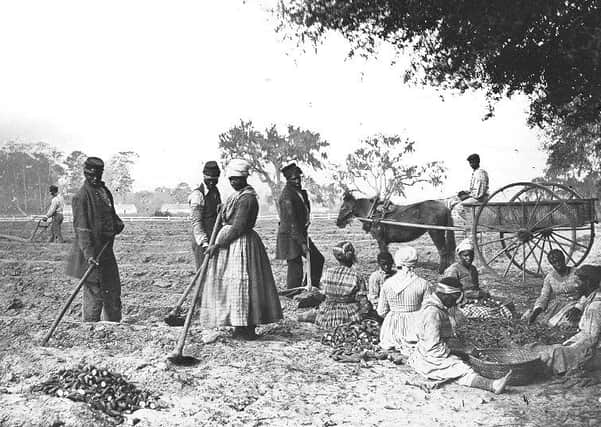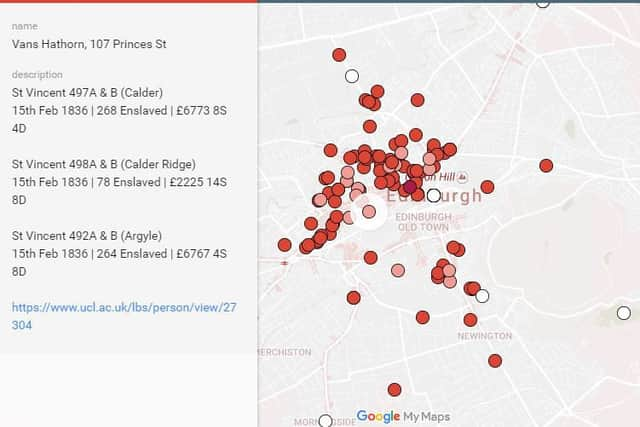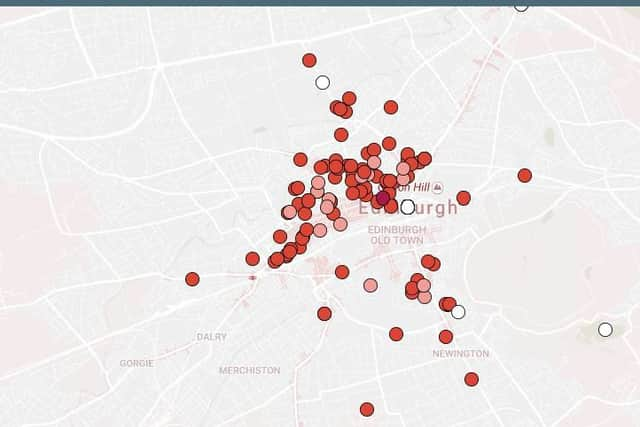Edinburgh slavery map offers glimpse into city's dark past
This article contains affiliate links. We may earn a small commission on items purchased through this article, but that does not affect our editorial judgement.


The map, which was created by a trio of Edinburgh architects, reveals the addresses of capital residents who applied for compensation following the British Slavery Abolition Act of 1833.
In 1833, the British government paid £20 million pounds to compensate 3,000 Caribbean slaveholders for the emancipation of their slaves, the equivalent to around £17bn today and a staggering 40 percent of the government’s annual budget
Advertisement
Hide AdAdvertisement
Hide AdSlave trading was abolished across the British Empire in 1807 but the condition of slavery itself wasn’t outlawed in Britain till 1838.


Using data from University College London’s Legacy of British Slave-Ownership database, the Edinburgh Slavery Map gives a snapshot into the life of slave owners of the time.
The map’s creators, Nathan Ozga, Vsevolod Kondratiev-Popov and Jamie Henry - all alumni of the University of Edinburgh - wanted to create a physical manifestation of slavery in Scotland after learning more about the topic.
“I found it very unsettling that the people who owned and sold slaves lived in the very buildings that surround you in Edinburgh, “ explains Nathan Ozga.


Advertisement
Hide AdAdvertisement
Hide AdHe continued: “On the map it is not just slave owners that are shown, it is people who were involved in the slave trade at the time: lawyers, plantation owners, trustees of slave owners or those who inherited a stake in slave plantations.
“We aren’t at a point yet where we can compare Edinburgh with other cities but the map is a starting point that we hope can give people a glimpse into a darker chapter in the city’s history, “
The map details the number of slaves each claimant was seeking reimbursal for and how much money they wanted back from the government.


Among the many New Town addresses on the map is a home two doors down from First Minister Nicola Sturgeon’s Bute House residence which belonged to a slave owner.
Advertisement
Hide AdAdvertisement
Hide AdOne of the biggest single payments went to Peter McClagan of Great King Street who, as an awardee, received £21480 10S 10D in 1836 for the “407 enslaved” at a plantation in British Guiana, approximately £1.7million in today’s money.
A slave owner, John Blackburn of Queen Street, submitted three claims for 638 slaves in Jamaica.
Scotland played a significant role in developing - and profiting from - the transatlantic slave trade.


Recent research has shown Scottish slave ownership was higher than in any other part of the UK.
Advertisement
Hide AdAdvertisement
Hide AdBetween 1760 and 1830 the Scottish economy grew from one of the weakest in Europe to become one of the most powerful.
Profits were made from vast amounts of Jamaican sugar, as the old sugar sheds that still exist in Greenock today testify.
David Pott, a campaigner for Flag Up Scotland, has called on the Scottish Government to recognise its “moral obligation” to the island.
He said: “Jamaica does not call for financial reparations which it would be perfectly entitled to do, instead it sensibly calls for a change in focus in the relationship between our two countries.
Advertisement
Hide AdAdvertisement
Hide Ad“The people of Scotland seem to be very open acknowledging that slavery did indeed benefit Scotland and damaged Jamaica.
“We are fortunate in Scotland that there appears to be little resentment from Jamaicans and the bond between our countries remains strong.
To view the fully interactive map visit the Scotland Slavery Map website.
DOWNLOAD THE SCOTSMAN APP ON ITUNES OR GOOGLE PLAY
